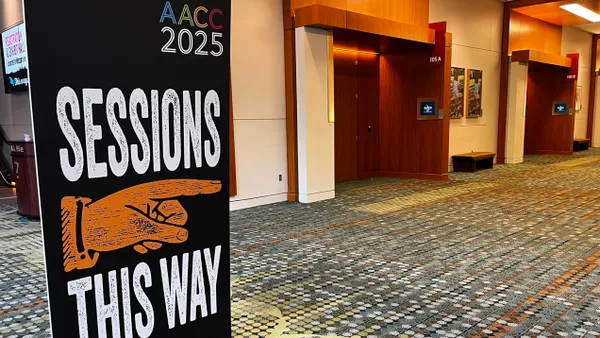Dive Brief:
- Attending most U.S. higher education institutions tends to improve a student's lifetime earnings, but certain for-profit institutions and private nonprofits with programs shorter than two years are less likely to pay off, according to a report from the Bipartisan Policy Center, a think tank in Washington, D.C.
- Public colleges and universities are most likely to give students their money's worth, with 96.3% providing a positive median return on investment. That's compared to 81.2% of institutions across all sectors. Among private nonprofit institutions, 89.5% posted a positive median return on students' investment. For-profit colleges fared the worst, with only 41% giving a positive median return.
- The report calls for the federal government to consider whether an institution provides students with a positive return on their time and money before allowing it to receive federal financial aid.
Dive Insight:
Education advocates have been pushing for stricter accountability for colleges that fail to set students up for success, especially because most higher ed institutions receive federal financial aid dollars. In January, over a dozen higher education experts and organizations called on the U.S. Department of Education to exercise stronger oversight of accreditors and how they handle colleges with poor student outcomes.
The Bipartisan Policy Center report encourages policymakers to create and use more detailed, institution-level analyses when evaluating colleges.
The center's researchers developed a model to examine colleges' return on investment while correcting for labor market discrimination. Since women and underrepresented minorities earn less money on average after they graduate, institutions with diverse student bodies could be penalized if not evaluated on a curve.
"Our adjustments assume that everyone had their post-college earnings inflated to match the earnings of a typical White man at their same institution," said Kevin Miller, associate director of higher education at the Bipartisan Policy Center and co-author of the report, during an online panel discussion Tuesday. He called the estimate a little clumsy but essential, given that the Education Department cannot currently break down earnings outcome data by race, ethnicity and gender.
Researchers examined historically Black colleges and universities as a separate category, finding 88.8% of HBCUs give their students a positive median return on investment. If adjustments for wage inequality and government subsidies lowering students' cost of attendance had not been adjusted for, it would have been only 48.3%.
The report also called for changing federal policy to allow for more specific evaluations of colleges' student outcomes. Its other recommendations include standardizing how institutions calculate the cost of college attendance and better regulating institutions that repeatedly pose a financial risk to students and taxpayers.
A higher education expert who has focused on the return on investment of a college degree pointed to information in the report about institutions with negative return on investment. The report found examples of institutions categorized as for-profit colleges, nonprofit institutions and public vocational institutions that post negative median returns on investment. Nondegree-granting for-profits were the least likely to show a positive median return on investment, with only 35% doing so.
"One finding that jumped out at me was the number of colleges with a negative ROI," said Martin Van Der Werf, director of editorial and education policy at Georgetown University's Center on Education and the Workforce. "We can probably all agree that if you go to a college and you end up not earning any more than a high school graduate, then it probably wasn't worth it."
Earlier this year, the Georgetown center released a report on institution-level return on investment specifically for low-income students. For that group, the report found public colleges focused on conferring bachelor's degrees gave the best median returns.
More information, specifically regarding demographic breakdowns, can only help stakeholders evaluate colleges' students outcomes, according to Van Der Werf.
"There's a real revolutionary nature to having this data available," Van Der Werf said. "Over the next decade or so, this really could have a large impact on the way that people, policy leaders, legislators and consumers evaluate the value of a college."













